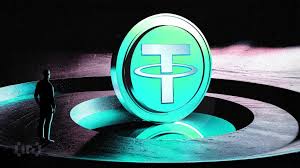In a significant development for the cryptocurrency industry, Tether, the issuer of the world’s largest stablecoin USDT, has announced the discontinuation of its Euro-pegged stablecoin, EUR₮.
The decision, revealed in a blog post on November 27, reflects Tether’s response to evolving regulatory requirements in the European Union (EU) and its focus on compliance with the region’s new Markets in Crypto-Assets (MiCA) regulation.
Launched in 2016, EUR₮ was among the earliest fiat-pegged stablecoins to provide a digital representation of the Euro. However, Tether has now ceased minting EUR₮ and will no longer accept new issuance requests. The company processed its last acquisition request for EUR₮ in 2022, signaling a strategic shift away from the token.

“After careful consideration, we have made the decision to discontinue support for EUR₮,” Tether stated in its announcement. “This decision aligns with our commitment to operate within regulatory frameworks and maintain a risk-averse approach to stablecoin issuance.”
The decision comes as the EU implements the MiCA regulatory regime, which outlines stringent rules for stablecoins and other digital assets.
READ ALSO: Biden Administration Advances $680 Million Arms Deal with Israel Amid Ceasefire in Lebanon
MiCA’s stablecoin provisions took effect in June 2024, with full enforcement slated for December 30, 2024. The regulations are designed to enhance consumer protection and ensure financial stability while fostering innovation in the cryptocurrency space.
Tether has outlined a redemption timeline for EUR₮ holders, offering ample time for users to adjust to the transition. Customers holding EUR₮ balances on supported blockchains have until November 27, 2025, to redeem their tokens.

The evolving regulatory environment has had a noticeable impact on EUR₮. Prior to this announcement, Tether had already started winding down EUR₮ support on several blockchains, including EOS, Omni, Kusama, and Algorand.
Additionally, prominent cryptocurrency exchanges such as OKX, Bitstamp, and Coinbase delisted EUR₮ earlier this year, further signaling a decline in its utility and market presence.
READ ALSO: Chinese SOS Limited Announces $50 Million Bitcoin Investment
These developments align with broader trends in the cryptocurrency industry, where regulatory clarity is becoming a cornerstone for stablecoin issuers to maintain operations.
With EUR₮ being phased out, Tether has redirected its focus toward new initiatives, particularly those compliant with MiCA regulations. The company has recently launched two MiCA-compliant stablecoins: USD₭ and EUR₭, in collaboration with Quantoz Payments.

Tether has also invested in Quantoz Payments to bolster its efforts in developing compliant stablecoin solutions. This integration will be powered by Tether’s blockchain technology solution, Hadron by Tether, showcasing the company’s commitment to innovation and adaptability in a shifting regulatory landscape.
Since its inception in 2016, EUR₮ played a pivotal role in the evolution of fiat-backed stablecoins. Its launch marked an important step toward diversifying the stablecoin market and offering users alternatives beyond US dollar-pegged tokens.
READ ALSO: Kraken Announces Closure of Its NFT Marketplace
However, the current regulatory environment demands heightened compliance and risk management. By halting EUR₮ issuance, Tether is taking a proactive stance to align its operations with these demands, ensuring a more secure and transparent ecosystem for its users.

As the MiCA framework reshapes the cryptocurrency industry in Europe, Tether’s strategic pivot underscores the importance of regulatory alignment for stablecoin issuers. While the discontinuation of EUR₮ marks the end of an era, it also opens the door for Tether to expand its offerings with compliant, innovative solutions like USD₭ and EUR₭.
For EUR₮ holders, the redemption window provides a clear pathway to transition, while Tether’s investment in new technologies and partnerships signals its commitment to long-term growth. This shift highlights the dynamic nature of the cryptocurrency landscape, where adaptability and compliance are key to navigating regulatory challenges and sustaining growth.

